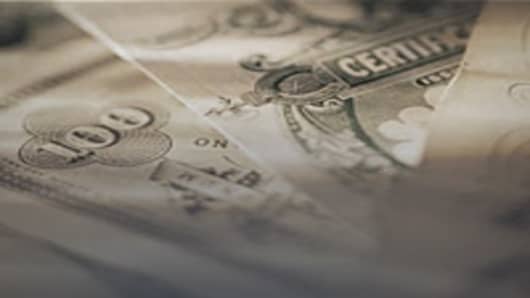U.S. Treasury debt prices rose on Friday as the previous session's sell-off lured bargain-minded investors and dealers bought bonds to exit hedges on the corporate debt issues they underwrote this week.
A private report showing Americans' anxiety about the economy at its highest in more than a year undercut optimism arising from upbeat housing data earlier this week, reviving some safe-haven bids for government debt.
Treasurys prices briefly extended Thursday's losses overnight on better-than-expected growth data from China. The world's second-biggest economy, while recording its weakest growth in 13 years in 2012, captured momentum in the fourth quarter to set up for a growth pickup in 2013. (Read More: China Picks Up Foreign Assets at Record Pace)
"We hit the top range overnight, but it wasn't enough to push yields higher. It's just part of the retracement from the sell-off yesterday," said Gennadiy Goldberg, an interest rate strategist with TD Securities in New York.
Benchmark 10-year Treasury notes were last up 11/32 in price at 98-1/32. The yield fell 4 basis points on the day to 1.845 percent after touching a session high of 1.896 percent.
On the week, the 10-year yield dipped 2 basis points but was still 9 basis points higher than at the end of 2012.
Treasury yields fell partly on Wall Street dealers buying government debt to exit interest rate hedges or "rate locks" on the corporate supply they helped sell, traders said.
Companies raised $35 billion in the U.S. high-grade corporate bond market this week, the ninth-busiest week ever for the sector, according to IFR, a unit of Thomson Reuters.
U.S. financial markets will close on Monday in observance of Martin Luther King Jr. Day.
Bond prices gradually recovered from their earlier lows as traders bought Treasurys to profit from the Federal Reserve's daily bond purchase. The U.S. central bank bought $1.57 billion in long-dated debt, part of its $45 billion monthly program aimed at stimulating the economy and lowering unemployment. (Read More: What Will It Take to Get the Fed to Stop Easing?)
Anxiety about whether Congress will raise the $16.4 trillion federal debt ceiling was another factor that has pushed benchmark yields from their eight-month highs in early January.
Some investors bought more Treasurys to hedge against weaker U.S. growth if the federal government were to default on its debt and enact a series of spending cuts because it cannot raise more cash.
However, others reckoned a U.S. default would damage the long-term appeal of Treasurys and cause a further downgrade to its credit rating.
In the credit default swap market, the five-year cost to insure against a U.S. default hovered at 44 basis points, its highest since August 2011 during the first debt ceiling fight between U.S. President Barack Obama and Republican lawmakers, according to data firm Markit.
Republican Plan
Amid worries over another showdown in Washington that could undermine a sluggish U.S. recovery, the top Republican in the U.S. House of Representatives, Eric Cantor, said on Friday his chamber of Congress will consider a bill next week to temporarily increase the borrowing limit for three months in order to pressure the Senate to pass a budget with spending cuts.
It is unclear whether this proposal will pass the House, and analysts pointed out it does not remove the deadline for a series of steep spending reductions - known as sequestration - to kick in on March 1.
"It's primarily a political move. It doesn't take the sequestration off the table," said Jennifer Vail, head of fixed income at U.S. Bank's Wealth Management Group in Minneapolis.
Talk of a vote for a temporary debt ceiling increase helped lower the interest rates on Treasury bills due in late February and March. The rates on these T-bill issues had risen on worries the U.S. Treasury Department might not repay them on time when they mature just as the government hits its debt limit.
Bills maturing in late February to March fell as much 3 basis points from late Thursday to 0.045 to 0.725 percent, according to Tradeweb.


